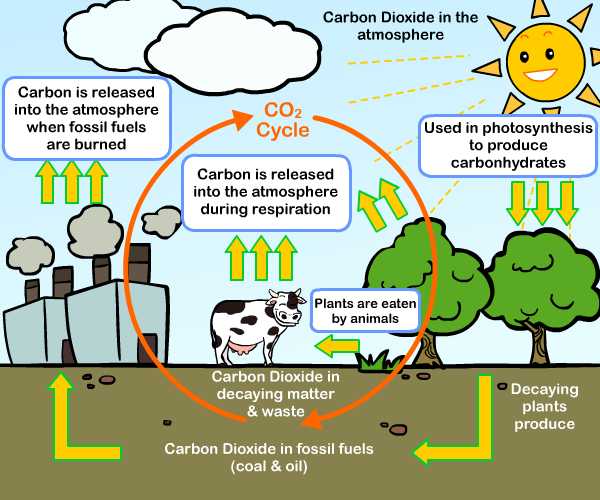Fossil fuels are sources of energy that come from dead organisms that underwent anaerobic or oxygen-free decomposition.
Fossil fuels are therefore very old; some of them reach ages of hundreds of millions of years. Fossil fuels are used in many human activities. They power the cars we drive. Most probably, they power your home’s cooking. Because of fossil fuels we can watch TV.
How are fossil fuels formed?
Remains of organisms such as plankton settled at the bottom of large bodies of water hundreds of millions of years ago. There was a lack of oxygen during this time, which promoted anaerobic decomposition. Their remains gradually mixed with mud and were buried under very heavy layers of sediment. Like metamorphic rock, these remains were subjected to high heat and pressure. Eventually, through a process called catagenesis, the organic matter from the dead organisms was turned into hydrocarbons, which are either in liquid or gas form. Examples of these hydrocarbons are petroleum and natural gas.
Newer fossil fuels were formed from the decomposition of terrestrial plants. The fossil fuel resulting from these sources includes methane and coal.
What are the types of fossil fuels?
There are several types of fossil fuels and their uses vary:
-
Petroleum. Petroleum or crude oil is a mixture of different hydrocarbons (a compound consisting entirely of carbon and hydrogen) such as heptane, hexane, pentane, butane, ethane and propane. It is flammable and toxic but it has many uses. When it undergoes distillation, petroleum is converted to different forms of fuel. These fuels include diesel, ethane, gasoline, jet fuel, kerosene, liquefied petroleum gas (LPG). Petroleum can also be mixed with non-hydrocarbons to come up with petroleum derivatives. These derivatives include motor oil, machine grease, wax, sulphuric acid, tar, asphalt and paraffin wax.
-
Natural gas. Natural gas mostly contains methane, with some ethane and other gaseous hydrocarbons. For natural gas to be used as fuel, it must be processed to remove impurities. The aim is to have pure methane. Originally, natural gas was just a by-product of petroleum processing. However, natural gas is now highly in demand because it appears to be a cleaner fuel source. It is estimated that burning natural gas results in 30% less carbon dioxide compared to petroleum and 45% less, compared to coal. However, it is more expensive than petroleum or coal.
-
Coal. Coal is actually a type of sedimentary rock that can be burned. It is found in layers of rock called coal beds. Worldwide, coal is the most widely used fossil fuel for electricity generation. In fact, approximately 40% of the world’s electricity needs are provided by coal. It is also the main source of carbon dioxide emission. In order to generate electricity, coal is first pulverized then burned (combusted) in a furnace. The furnace has a boiler that contains water. With the heat generated, water turns to steam and this steam then spins turbines. These turbines turn generators, which eventually produce electricity.
What are the effects of fossil fuels on the climate?

It has been mentioned that fossil fuels are primarily hydrocarbons. This means that they contain hydrogen and carbon atoms. When they undergo burning or combustion, they combine with oxygen. The main products of this process are carbon dioxide and water. Unfortunately, the continuous burning of fossil fuels have contributed greatly to increasing levels of carbon dioxide in the atmosphere, which in turn, enhances the greenhouse effect. Carbon dioxide, as a greenhouse gas, traps heat in the surface of the earth. This heat-trapping increases the earth’s temperature and facilitates climate change. Many scientists fear that climate change will produce severe typhoons and hurricanes, melt the polar ice caps, increase sea levels and promote the extinction of many species.
How does fossil fuel burning contribute to pollution?
Additionally, because fossil fuels contain sulphur, acid rain can result when they are present in the atmosphere. Acid rain causes corrosion or destruction of metals and can irritate human mucous membranes present in the skin and eyes. Fly ash from burning fossil fuels can also contaminate water sources. Coal burning produces a lot of dust and carbon particles, which can deposit in the lungs and cause a condition called anthracosis. Therefore, the burning of fossil fuel can cause respiratory diseases.
Fossil fuels are non-renewable energy sources, which means they will eventually run out. This is the reason why many scientists and environmentalists are now actively studying alternative and renewable energy sources.
After reading about fossil fuels here why don’t you expand your learning by downloading our fossil fuels worksheets and coloring pages? Have fun!
